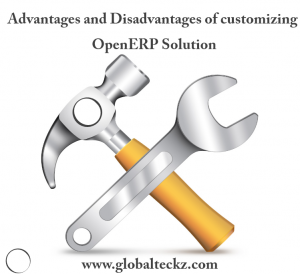The advantages and disadvantages of customized OpenERP solutions. The recent release, OpenERP Version 7, has been adopted by businesses ranging from SMEs to large organizations across various industries, including manufacturing, trading, and services.
While ERP software offers numerous benefits, its effectiveness largely depends on proper implementation methodologies. Many clients believe that being an open-source ERP, OpenERP can easily be tailored to their needs due to its code availability. However, there are notable disadvantages to customization that should not be overlooked, especially when it comes to unimportant processes.
Advantages of Customizing OpenERP Solutions
- Tailored Functionality: OpenERP’s open-source nature allows for extensive customization according to specific business requirements and workflows. You can modify the source code to meet your precise needs.
- Enhanced User Experience: Customization enables you to focus on the functionalities your business truly requires, eliminating unnecessary features that might confuse users.
- Long-term Viability: Customized OpenERP implementations can provide a sustainable software solution tailored to your business’s long-term goals.
- Adaptability: If your business processes are dynamic, OpenERP customizations can help you meet both short-term and long-term objectives effectively.
- Integration Capabilities: Alongside customizations, you can integrate OpenERP with third-party software, enhancing its functionality and streamlining operations.
- Reduction of Duplication: Customization can help eliminate duplicate entries and unnecessary fields, improving data accuracy.
Disadvantages of Customizing OpenERP Solutions
- Higher Costs: Customizing OpenERP can be more expensive compared to out-of-the-box implementations, as it often requires additional resources.
- Upgrade Challenges: Upgrading to newer versions can pose difficulties for customized systems unless you have the necessary support and warranty.
- Time and Resource Intensive: Customization can require significant time and resources, extending the project timeline.
Conclusion
Customizing OpenERP solutions offers both significant advantages and notable challenges. While tailored functionality, enhanced user experience, and adaptability can lead to improved operational efficiency and long-term viability, businesses must also consider the higher costs, potential upgrade challenges, and the time and resources required for customization. Therefore, it’s crucial for decision-makers to carefully weigh these factors when deciding between customization and out-of-the-box implementations. By understanding both sides, organizations can make informed choices that align with their unique needs and goals, ensuring a successful ERP implementation that supports their growth and efficiency.
Read Our Articles








Sometimes openerp.
Customization can. Take. More. Time as compare to default. Implementation
Hi Robbert
Completely agree,
That’s why we suggest to our clients go for vanilla first and then add the toppings you needed,
If you are satisfied with vanilla flavor then no need to waste the toppings 🙂
Thanks
Globalteckz Team